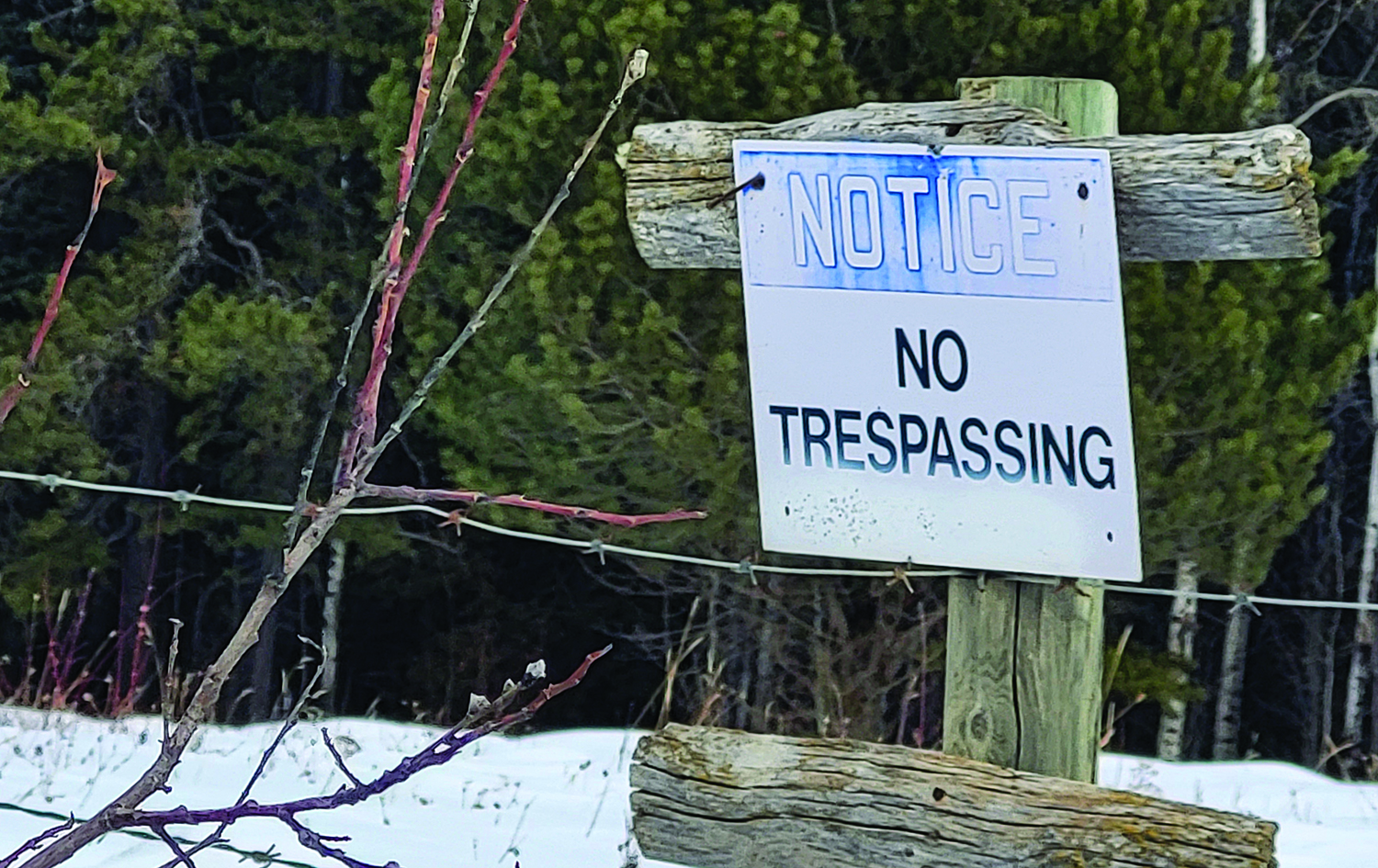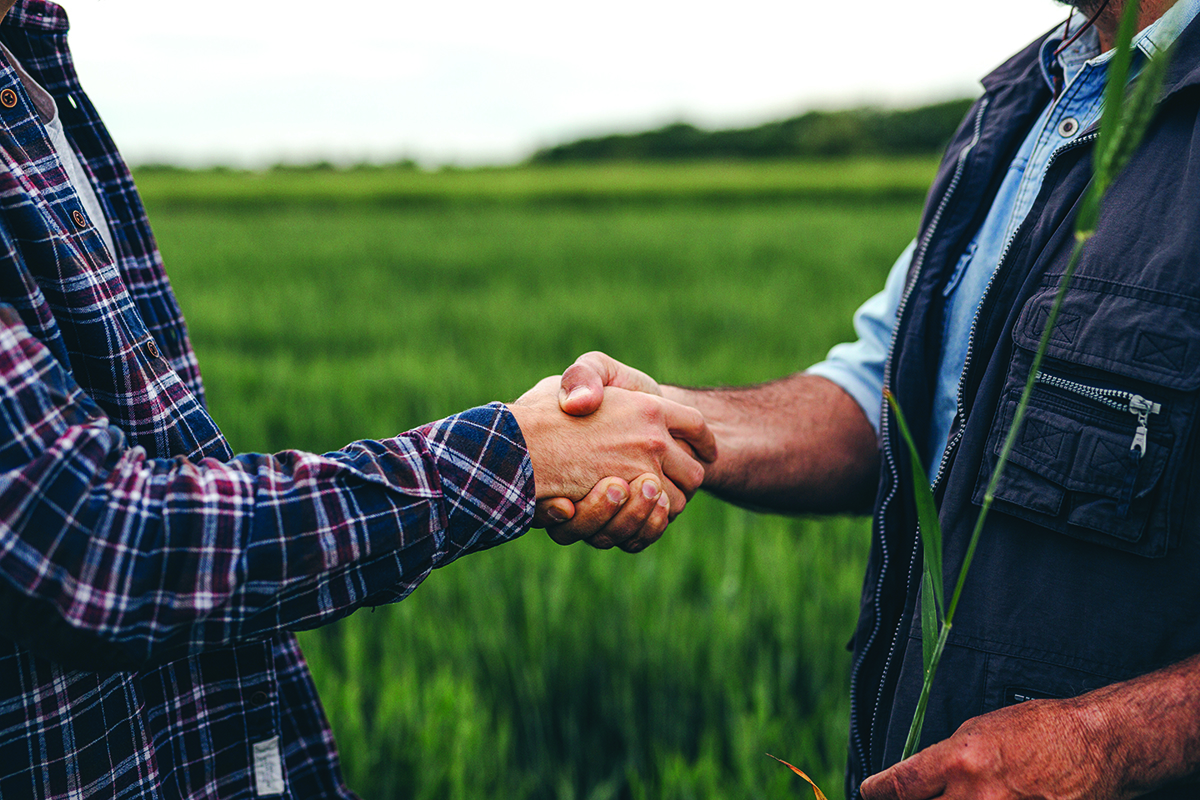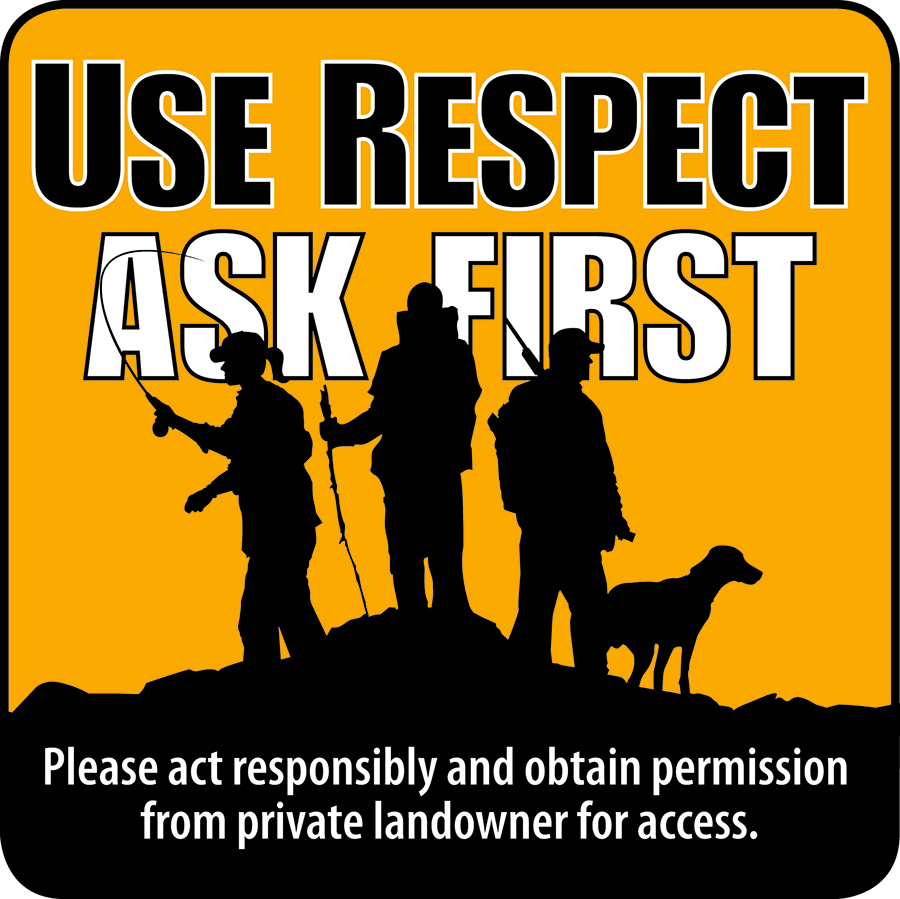
8 minute read
Mending Fences?
Can a chat at the farm mend fences over private land access?
by Susan Hagan
Jason Lafrance grooms trails, builds tree stands, checks trail cameras, and hunts with his dad, wife, and two children at his two quarters near Elk Island. He knows each bend, reads the small changes like when a gathering of bald eagles up the hill in front of his house led him to find a dead little spiked buck they were feeding on. Another poacher. “It is frustrating,” he says.
“The poacher who caused the problem never asked in the first place,” says Lafrance, who is also a teacher, biologist, and outdoor educator who teaches youth hunting skills. “They are ghosts.”
He’s also had uninvited snowmobilers which can cause ruts in fields, compress soils and damage crops, forcing him to gate off access. Lafrance understands landowner frustrations. He lives them. But as a hunter, he’s also concerned that a few bad seeds make it trickier to find hunting grounds on private lands.
So, when someone knocks on his door wanting to fill a freezer and teach youth to hunt, he might take them out and show them a good spot. But he needs them to share his ethics about leaving young does and respecting the land.
“When a guy came and asked permission with his daughter, they had a moose tag and we have lots of moose,” says Lafrance. “If I feel that I can trust you and you can follow the rules, I can help you harvest an animal. I’m excited to see young people, and people in general, who share my ethics. The reality is, I don’t trust a lot of people to share my ethics.”

photo: Samuel Gobeil
Why hunting private lands is getting harder
In recent years, it seems more hunters are denied access to private lands. To learn more, Alberta Conservation Association (ACA) conducted two voluntary online surveys in 2021 and 2022, garnering responses from about 2,000 landowners and 3,000 hunters. Answers mirrored each other’s experience—more landowners said no to hunting because of past damage, poaching, and trespassing, and hunters found it harder to get permission.
“One strike, and everyone’s out,” says Paul McLauchlin, President of the Rural Municipalities of Alberta (RMA). He is also a farmer, lifelong hunter, biologist, and former park ranger who believes that hunting is crucial to conservation. “It lumps every hunter into that scenario. It puts a bad taste in someone’s mouth,” he says. “I’ve talked to neighbours who don’t allow access like they used to after an incident. There’s a need to build that relationship and trust.”
About half of the hunters indicated that they do get access, especially after developing a rapport. Agricultural producers granted access more often than owners of residential or recreational lands. Landowners—mostly farmers—were more likely to grant hunting access to family and friends, and less likely to strangers. But hunters indicated they often rely on strangers, or people they built a hunting relationship with in the past. In other words, strangers they got to know over time.
Hardwired to be wary
Humans are wired to be wary of unfamiliar faces outside of their immediate group. Many such unfamiliar faces flocked to the countryside during the pandemic, looking for fresh air and open spaces. Newspapers reported sunflower crops trampled for selfies, garbage strewn about, and rural services stretched thin. While most people behaved, driving through the countryside you see more locked gates at the laneway and No Trespassing/No Hunting signs lining fields and pastures.
Jared Diamond writes in The World Until Yesterday that humans evolved to trust within their own groups because they shared interests. Strangers were automatically lumped with enemies. “With the rise of chiefdoms around 7,500 years ago, people had to learn, for the first time in history, how to encounter strangers regularly without attempting to kill them,” Diamond wrote in an earlier book Guns, Germs, and Steel: The Fates of Human Societies.
Though it came with risks, cooperating with outsiders became a benefit. And so came ways of dealing with risk. Friendly gestures of a handshake and a pat on the back likely developed as a means of frisking people for weapons. A similar ritual occurs during small talk at the farm gate.
How to meet rural people
Lafrance hunts private lands throughout the province and says he gets about 90 percent access for bird hunting on foot with his dog, compared with about 50 percent success— including new lands—for larger game. He does his homework, starting with iHunter maps. Armed with maps showing landowner name and address, he scouts territory in August, driving around, knocking on doors, which he says is more effective than a phone call or text. He explains his ethics. He empathizes with landowner complaints, and accepts graciously when denied. He asks permission for every hunt—even places he’s hunted for years—checking in and out with the landowner. He leaves gates as found (open when open; closed when closed) and never drives on the land. He tells farmers when cows are out or something is off, like an unexpected truck parked in a field.
It can be uncomfortable to strike up a conservation with a stranger, but it’s worth it. “You develop those relationships over time,” Lafrance says. “Those relationships often turn into a referral to the neighbour down the road who saw a herd of elk—he’ll say ‘here’s his phone number.’”
McLauchlin says rural people are open to chat, “Pretty much anybody rural would love to talk to you and get to know you.” Yes, they’re sizing you up. but they also want to tell you a few things. “I let them know this (permission) isn’t perpetual, so if you want to come out here again, we’ll have to talk,” McLauchlin says. “Don’t shoot towards the house, and I have horses and those aren’t elk so make sure you don’t screw that up.” He says that when it comes to these relationships he goes with his gut and has said no to people in the past.

Can fences be mended?
With cities encroaching on agricultural land, rural Albertans are vastly outnumbered— comprising 15 percent of the population, down from 50 percent a century ago. McLauchlin says everyone needs to understand and respect rural Albertans and the conservation work they do.
“Rural Albertans provide tremendous amount of biodiversity services on behalf of Canadians and we’re not renumerated for it,” McLauchlin says. “On my farm, I’m conserving more carbon than anybody in the city. There are tremendous opportunities to increase that respectful relationship.”
Kathy Rooyakkers, Deputy Reeve/Councillor for Wetaskiwin County, takes calls from residents every year about poaching, trespass, cut fences, and ruts on fields. Some say that even gut piles left near cattle herds draw wolves and cougars that threaten livestock during calving season, so conversations are a must. “The trust was broken when people poached, or didn’t ask for permission,” says Rooyakkers, who owns agricultural land that her nephew Lafrance grew up hunting on.
But Rooyakkers wants the relationship between landowners and hunters to improve because hunting helps with heavy deer populations that decimate winter feed and crops. She allows hunting on her land where and when possible, meaning not near home or highway, or on land rented out with horses.
“If nobody’s hunting, we’re overrun,” she says. “Alberta hunters play a vital role within our wildlife management in our province.”
Farmers and hunters go way back
According to Scientific American, the relationship between farmers and hunters goes back thousands of years, with a history of both tension and cooperation. In Europe, the arrival of farmers displaced hunter-gatherers, driving them deeper into the forest. Archeologists also discovered evidence in Germany that hunters and farmers lived together and intermarried in a multicultural settlement 7,300 years ago. The interactions were mutually profitable— hunters traded for livestock and harvests; the farmers appreciated the hunters’ toolmaking abilities, as well as the addition of fish, game, nuts, and berries to their diet.
Social capital theory is the notion that people and societies benefit through reciprocity, trust, and cooperation, with differences strengthening contributions. Hunters need land to pursue quarry. Landowners need hunters to control wildlife populations. It’s a formula that has long worked.
“There’s a tremendous opportunity for hunters and farmers to control the populations and make sure that we’re using the resources in the best way possible,” McLauchlin says. “The most respectful way possible.”

Know the Rules
• Secure the correct licences and tags.
• Find out who owns the property; purchase a county map through the municipality or through the iHunter app (www.ihunterapp.com).
• Tour the area and secure permission at least two weeks prior to hunting season.
• Don’t rely on a ‘yes’ from previous hunting seasons—get current permission.
• Even if land is not fenced, you need permission. Snowmobiles and quads can damage cropland.
• Report A Poacher: Toll free 1-800-642-3800, 24 hours a day 7 days a week.
• Stop in at rural hunting supply and general stores and visit with anyone who will talk to you.










